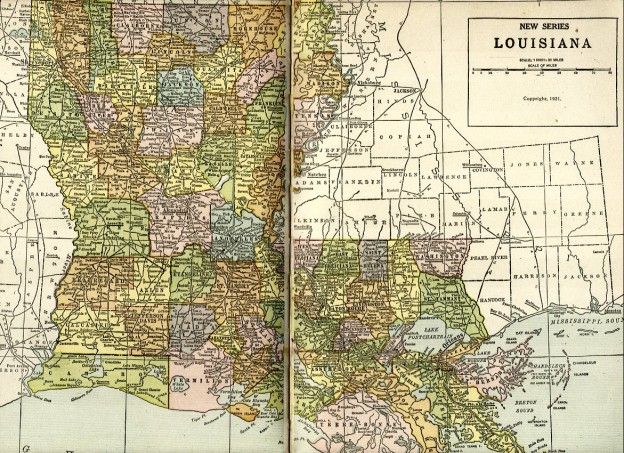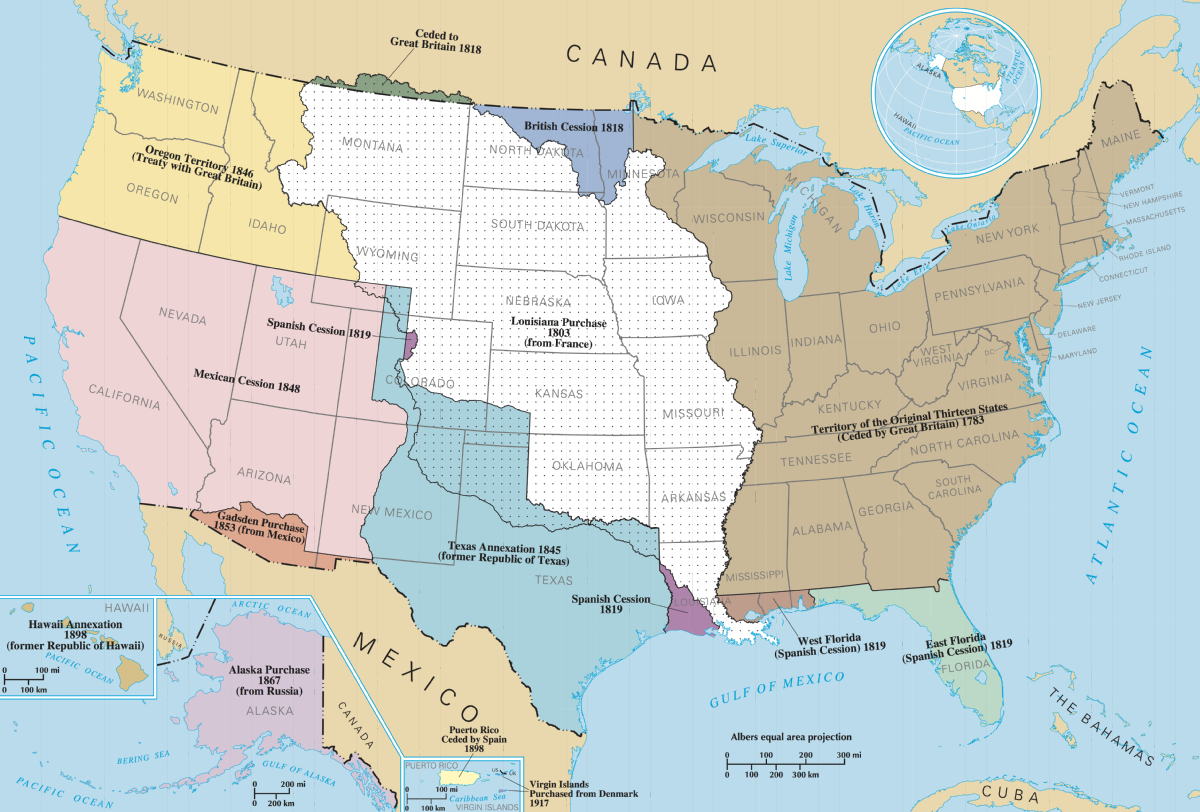

In honor of Presidents Day, let’s take a look at a few major US land deals of the past. For the most part, the land mass of the United States is made up of land that was settled in a treaty, annexed, or ceded by another country. There are however, several instances in which the land was purchased not as a result of a treaty resulting from direct conflict- but by sale from one country to the United States:
The Louisiana Purchase (1803)
The Louisiana Purchase was the biggest, and many would say- best deal the US ever conducted to acquire land. Bought from Napoleon’s France in 1803 for $15 million, President Thomas Jefferson had to contend with ample resistance from the Federalist Party, which insisted that the Constitution forbid the acquisition of territory. Although Jefferson was not totally in favor of the transaction, he believed that the expenditure and its benefits would outweigh the costs of France exerting its control over the territory, and possibly beyond. France had only recently gained ownership of the territory by its treaty with Spain, but was now relatively short on cash. The purchase would relinquish Napoleon’s dream of reestablishing part of the French empire in Louisiana, and in turn, the US gained some 13 states worth of territories at the bargain price of less than three cents per acre (or less than 42 cents per acre in today’s dollars).
The Alaska Purchase (1867)
Commonly known as “Seward’s Folly,” the US purchase of Alaska from Russia in 1867 for $7.2 million by then-Secretary of State William H. Seward stands out as a particular stroke of genius due to the vast oil and mineral extraction, and (at that time) fur business that developed. In fact, most historians contend that the popular notion at the time was that the purchase was a good idea- a common misunderstanding today. Many news editors cited better relations with Russia, an improved potential to acquire British Columbia, and better access to the fur trade. At $7.2 million for over 580,000 square miles (2 cents per acre today), the trade brought quite significant dividends decades later.
Treaty of the Danish West Indies (US Virgin Islands, 1916)
The United States purchased the Danish West Indies from Denmark through a treaty of transfer of sovereignty for $25 million in gold in 1916. Originally, the US became interested in the late 1800s during the Civil War for use as a naval base, but after failure in the Senate, the US did not resume talks until 1899. A first convention in 1902 failed again, but in 1915, Danish labor leader David Hamilton Jackson made a plea tothe Danish Parliament to transfer sovereignty on the basis of the deteriorating socioeconomic conditions on the islands. Several complications ensued, but after another year of talks, the treaty was ratified in New York on March 31st, 1917. The US would declare war on Germany in World War I only five days later, but for the sum of $25 million, the US gained a land area of around 133 square miles among the Leeward Islands of the Lesser Antilles, about $80 per acre in today’s dollars.
